Phantoms In The Hills
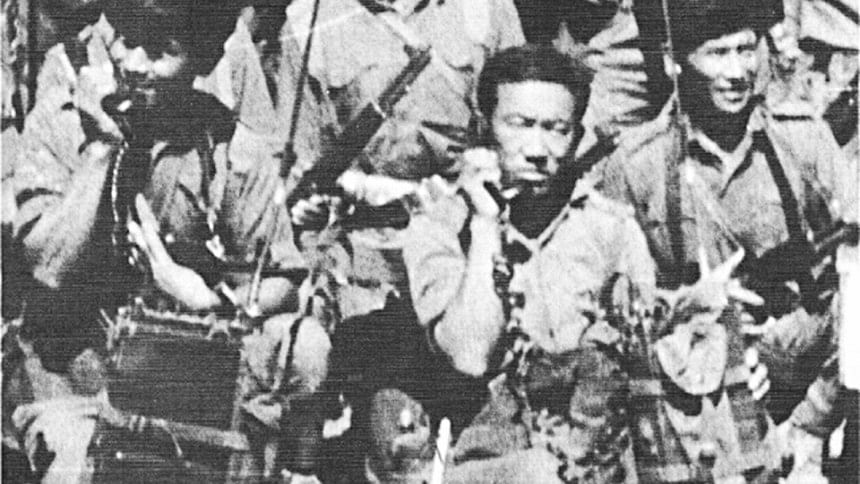
You never can tell their position but they are already stalking you. They remain invisible and when the time comes, they strike you with lightning speed with an unerring instinct for hitting the target. The Pakistan occupation army faced such a ghostly force in Chittagong Hill Tracts during the Liberation
War of Bangladesh.
The Tibetan guerrillas, who came from another land to fight for another country's independence, swept the hills, crushing one Pakistan stronghold after another. "Phantoms of Chittagong," they are called.
There were several types of operations during the nine-month war but one mission -- "Operation Eagle" -- was highly exceptional and remarkable as it was under an undeclared, clandestine war plan.
The Bangladesh Liberation Force (BLF) and Indian RAW's secretive Tibetan team -- Special Frontier Force (SFF) -- jointly conducted the operation to create a free zone in Chittagong.
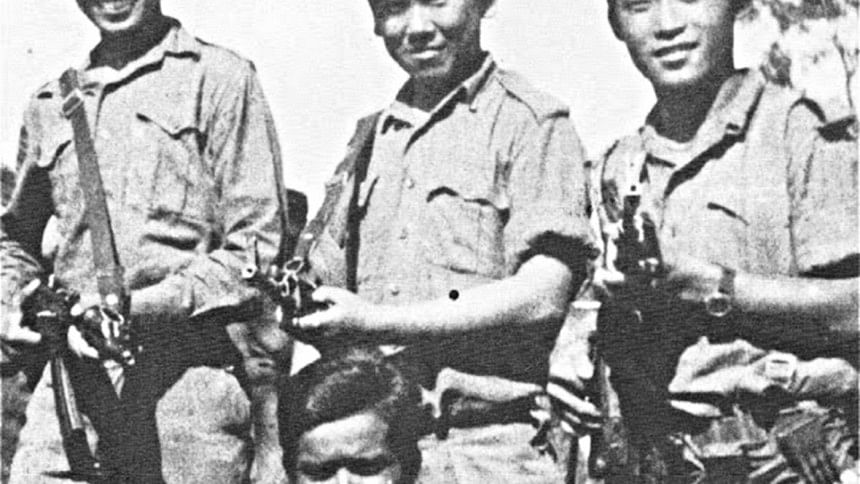
Chittagong and Chittagong Hill tracts were considered most suitable zones for guerrilla warfare. Apart from Pakistanis, local Mizo rebels who were helping the occupation forces were needed to be crushed and for this SFF was the best option. Tibetans and Mizos have similar physique.
The Tibetan soldiers believed in rebirth and considered death as a better option towards the lion-gate of future. This thought often made them desperate. Besides, they had keen eyesight and innate capability to sense danger. For any force, they were the best recruits as guerrillas.
They loved modern weapons and disliked getting separated from their weapons, according to some writings.
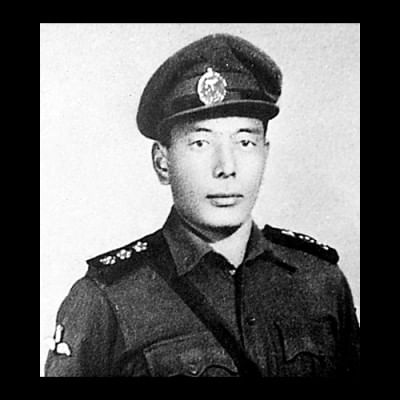
At the end of the 1962 Indo-Chine war, some documents say, former chief minister of Orissa Biju Patnaik first came up with the idea of a special guerrilla unit comprised of Tibetan youths who had taken shelter in India following Chinese repression in Tibet.
Intelligence Bureau chief Bholanath Mullick took up the initiative and formed SFF, also known as Establishment 22, on November 14, 1962.
In 1971, Indian prime minister Indira Gandhi had played a vital role to bring the force into the Liberation War of Bangladesh.
Writer and researcher Tashi Dhundup of Katmandu, in an article at Himal Southasian, a review magazine of politics and culture, mentioned a letter of Indira to Tibetan force in the writing titled "Not their own Wars".
"We cannot compel you to fight a war for us," Gandhi wrote, "but the fact is that General AAK Niazi is treating the people of East Pakistan very badly. India has to do something about it ... It would be appreciated if you could help us fight the war for liberating the people of Bangladesh."
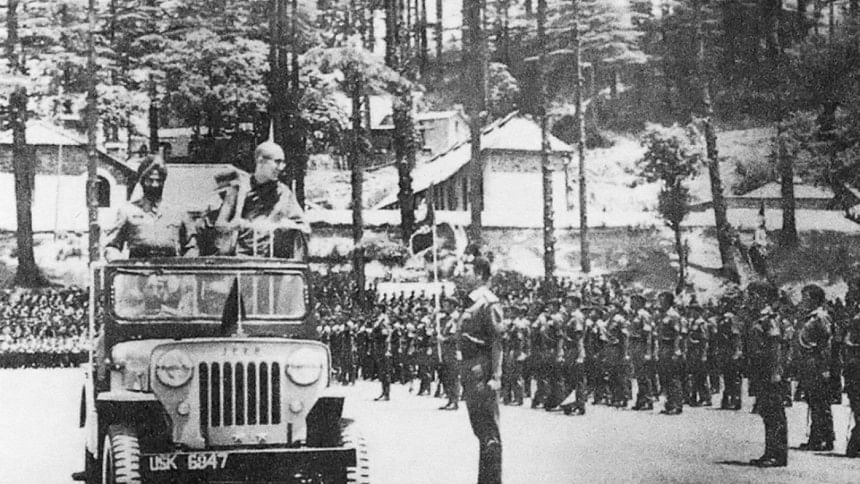
Inspector General of SFF Sujan Singh Uban took up the command of the entire operation.
The preparatory period started from mid-October under the guidance and direct involvement of some Indian Army officers gathered from different regiments, especially from Dehradun Military Academy.
Three columns were formed for the operation -- the first one to surround Chittagong through Arakan road in the south, the middle column was to surround Chittagong through Kaptai-Chittagong road and the third to surround Chittagong through Rangamati Chittagong Road.
BLF leader Sheikh Fazlul Haque Moni sent a team to a camp in Agartala Glass Factory. From there, BLF members reached Demagiri border area and met one dozen Indian Army officers and around three thousand SFF members there. (It's not still clear exactly how many SFF members participated in the war.)
The joint force started its journey from Demagiri on October 11. It had information that the enemy had a strong set up at the bank of the river Karnaphuli. But the troops crossed the border area without any obstacles.
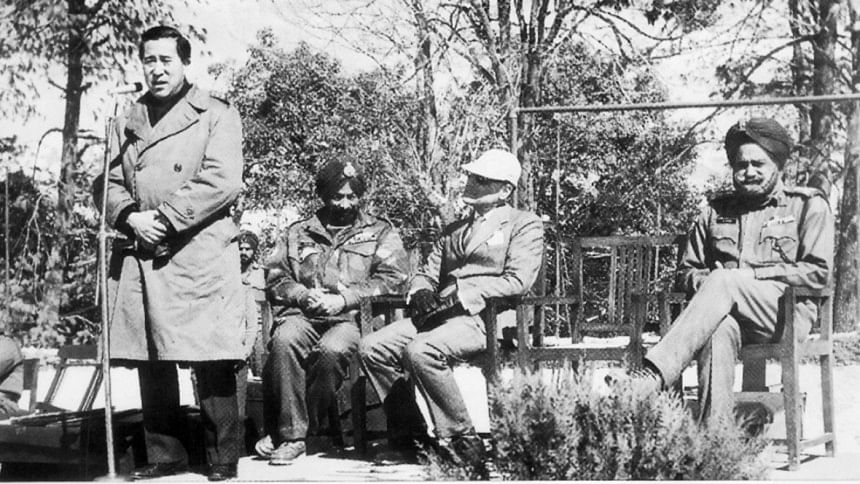
They captured some posts of Pakistan army at Dhanubak, Deghalchhari, Boroitoli and marched towards Barkal. In the second and third week of November, they captured Barkal.
The air force led rocket attacks on Pakistani military's different establishments to help SFF capture Barkal. After Barkal, they now went for Khagrachhari. The mission was successful but it took the lives of twenty one members of the force.
Within a few days, Shubholong was freed. Next target was Kashalong Khal so that the enemies could not escape though this way to Rangamati. For capturing Kashalong Khal as well as Rangamati, the force sent several soldiers through helicopters.
Due to the shortage of helicopter, the guerrillas were carried in phases. The enemy side assumed that a huge number of troops were gathering there. Panicked, the Pakistan army left most of the areas. Some posts that were under the Pakistan army's control were finally occupied by the BLF and SFF members after December 10.
The joint force got a message from the Indian army chief to send a strong commando team to Dohajari to block the Arakan road so that the enemies cannot escape to Burma (Myanmar).
The Pakistani army was dumbfounded when they came under attack as they broke the Dohajari bridge so that SFF and BLF members could not cross. In that battle, local freedom fighters joined the BLF and SFF men.
The Pakistan army had to leave the Dohajari area by train on December 12 to Chittagong city. With this, entire Chittagong except for some city areas became free.
After this victory, the force sent a message to the Indian army chief that it was not possible for the enemy to escape to Burma through this way and the Pakistan army had no option but to surrender. So the Indian chief could ask Pakistan army's eastern command chief Lt Gen AAK Niazi to surrender.
On December 13/14, a portion of the troops reached Anwara upazila and took position at south part of the Karnaphuli river at Marine academy. Meanwhile, BLF members captured the Radio station at Kalurghat.
On December 16, Sector-1 Commander Major Rafiqul Islam's team along with Indian soldiers occupied the naval base. And in Dhaka, Lieutenant-General AAK Niazi surrendered to Lieutenant General Jagjit Singh Aurora, joint commander of the Bangladesh-India Allied Forces.
On that day, when the Pakistan army surrendered in Dhaka, the Phantoms came out in the open on Chittagong Road to celebrate, Manas Paul wrote in a Time of India article. The locals were stunned by their sudden appearance. Even the Indian soldiers were surprised. They had no clue of their presence in the vicinity. But soon Maj Gen Uban ordered them back into the shadows. And there they remained.
Tibetans lost about 50 men and another 190 were injured in that operation. Later, the Indian government awarded 580 members of the force for their gallantry in the 1971 war.
Source: Phantoms of Chittagong: The Fifth Army in Bangladesh by Maj Gen (retd) SS Uban; Muktijuddhe Chattagram, Part-2; Mukti Sangram Theke Muktijuddhe Jatra by Eng Siddique Ahmad.

 For all latest news, follow The Daily Star's Google News channel.
For all latest news, follow The Daily Star's Google News channel. 



Comments